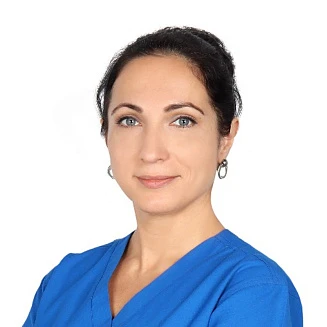Mammology
Diagnosis and treatment of breast diseases

Service provided by
All doctorsPrevention of Women’s Cancers
At Polyclinic.ae, consultations are provided by a highly experienced Russian-speaking mammologist specializing in the diagnosis and treatment of breast diseases. The doctor manages both benign and malignant conditions and performs examinations for patients with fibroadenomas, cysts, mastopathy, and inflammatory processes.
All modern diagnostic methods are available in the clinic: expert breast ultrasound, mammography, and, if necessary, biopsy and sampling for analysis. Each consultation includes a comprehensive breast examination and risk assessment.
For women with implants, the doctor also conducts implant monitoring and evaluates their condition.
We place strong emphasis on the prevention of women’s cancers. The mammologist, together with Polyclinic.ae gynecologists, conducts screenings and preventive check-ups aimed at the early detection of breast cancer and other gynecologic malignancies.
When to See a Mammologist
- Pain or discomfort in the breasts
- Lumps, nodules, or changes in breast shape or size
- Nipple discharge
- Suspected fibroadenoma, cyst, or mastopathy
- Family history of breast cancer
- Implant check-up and safety assessment
- Preventive breast examinations after the age of 40
- Hormonal changes or menopause monitoring
- Signs of inflammation (mastitis or other breast infections)
- Pre-pregnancy evaluation and postpartum monitoring
Advantages of Mammology at Polyclinic.ae
Frequently Asked Questions
- What does a mammologist do?
-
A mammologist diagnoses and treats breast diseases, including benign and malignant tumors, fibroadenomas, cysts, mastopathy, and inflammatory conditions.
- What diagnostic tests are available at Polyclinic.ae?
-
We offer expert breast ultrasound, mammography, biopsy, and all necessary laboratory tests.
- Can I have my breast implants checked?
-
Yes. The mammologist performs implant evaluation, ensuring their safety and integrity.
- Do you offer breast cancer prevention?
-
Yes. We conduct regular screenings and check-ups for the early detection of breast cancer.
- Can I do laboratory tests at the clinic?
-
Yes. All required laboratory studies for breast health assessment and general diagnostics are available on-site.
- Do you perform biopsies if a lump is found?
-
Yes. Biopsy and tissue sampling are performed when needed to confirm the diagnosis.
- Do you treat inflammatory breast diseases?
-
Yes. We manage mastitis and other inflammatory conditions of the breast.
- Do you see women with a family history of breast cancer?
-
Yes. We offer personalized monitoring and preventive programs for patients with hereditary risk.
- Should I see a mammologist if I have hormonal imbalance?
-
Yes. Hormonal changes, especially during menopause, are closely linked to breast health and require regular monitoring.
- Do you perform check-ups during pregnancy and postpartum?
-
Yes. We monitor breast health during pregnancy and the postpartum period, including preparation for breastfeeding.
- Can I book a preventive check-up without any symptoms?
-
Yes. Regular preventive examinations after the age of 40 help detect diseases at an early stage.
- Do you collaborate with other specialists?
-
Yes. The mammologist works closely with gynecologists, oncologists, and endocrinologists to ensure a comprehensive approach.
- Do you perform mammography at the clinic?
-
Yes. Polyclinic.ae provides mammography using modern, high-precision equipment.
- Do you accept insurance?
-
Yes. Most insurance plans are accepted through direct billing.
- What makes mammology at Polyclinic.ae unique?
-
Our department features a highly qualified Russian-speaking mammologist, full-cycle diagnostics (ultrasound, mammography, biopsy, tests), implant monitoring, a strong focus on cancer prevention, and a multidisciplinary approach — making it one of the leading breast care centers in Dubai.

